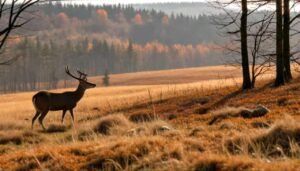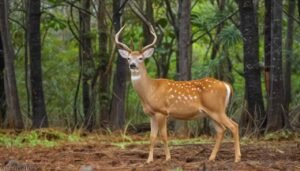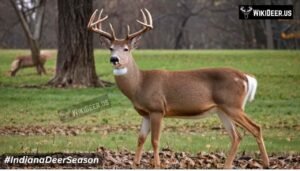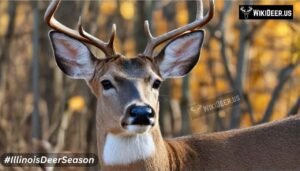Master Your Deer Hunting Season Schedule: Essential Dates
Getting ready for deer hunting means knowing the times and seasons well. At DeerHunt.org, we offer a handy roadmap for when deer hunting happens. If you’re on the look-out for whitetail in the Midwest or mule deer in the Rockies, being in tune with their patterns matters. Get to know the must-know dates, local details, and unique hunting chances to help plan your season just right.

In-Depth Look at the Deer Hunting Season
- Understanding the Rut: The rut, or breeding cycle, usually happens from late October to November, depending on the region. Bucks become more active during this phase, meaning they’re more visible during daylight – which is excellent for hunters. After the rut, the bucks need to recoup energy leaving them more nocturnal. Hunters often focus on where the bucks rest and eat to get the best hunting results.
- Post-Rut Hunting: After the rut, bucks tend to retreat to denser areas to regain their stamina. As a result, hunters should focus on these places near food sources like acorns and winter wheat for a successful hunt.
- Moon Phases and Deer Activity: The stage of the moon affects deer activity. For instance, during a full moon, deer are more likely to move at night. Yet, right after a full moon, they may shift their schedules and be more active in the daytime, providing good hunting opportunities.
- Regional Peak Times: The rut starts at different times depending on the region. For instance, in the southeast US, it may not start until December or January. In contrast, it often reaches its peak in November in the Midwest.
- Early Season Patterns: When fall starts, deer target food sources to store fat for the winter. Often, bucks hang out around places like crop farms, oak trees with acorns, and wild bushes. Hunt in the early season around these food spots, late in the day could be successful.
- Pre-Rut Movement: Bucks change from eating to claiming territory and attracting mates as the rut draws near. This time, before the rut, sees a lot of movement as bucks mark areas with rubs and scrapes. Spotting these signs can lead to a hunting hotspot during the rut.
- Winter Survival: After the rut, late in the season, deer focus on getting through the winter. They look for foods rich in calories and tightly packed foliage to save energy. Hunting now needs you to know where deer are likely to rest and eat, especially in colder regions.
- Impact of Weather: Changes in weather can considerably affect how deer move. For instance, the first frosty day often starts more feeding and deer might move more before a storm comes in. On the other hand, lots of snow can limit movement, making deer stick to dense bushland. Adapting your hunting approach to the weather could enhance your chances of success.
- Antler Restrictions: Some states set antler rules to encourage bigger, older bucks. States may demand bucks have three or four antler points on one side to be legally hunted. These rules help ensure fair play and better deer management.
- CWD Zones: Chronic Wasting Disease (CWD) worries many states, resulting in unique rules in affected areas. These could include compulsory testing, limits on transporting deer bodies, and set disposal ways to stop disease spread. Deer hunters must know about CWD areas and obey all rules to safeguard deer numbers.
- Tagging Requirements: Every state has its deer tagging rules. Some need physical tags on the deer right after the hunt, while some use digital tagging methods. Learners need to know their state’s tagging rules to dodge fines and ensure a lawful hunt.
- Youth and Disabled Hunts: Some states set up special hunt seasons for young and disabled hunters. They get their chance in fewer pressure zones. These hunts usually happen before the usual season and might have lenient rules to promote participation. Backing these programs introduces newbie hunters to hunting and guarantees its continuity.
Key Topics Covered:
- Prime Dates for Rut and Beyond
- Seasonal Behavior of Deer
- Essential Preparations
- Special Regulations and Permits
Your go-to spot for all things related to deer hunting is our Deer Hunting Season Schedule category. More than just numbers on a calendar, we dive into deer behavior at various times to suggest the best hunting hours. Discover the impact of different regions on deer movement, pick up tips for preparing hunting gadgets, and stay updated with special rules that might switch up your plans. This isn’t a regular schedule- it’s a proven roadmap on your journey towards a rewarding deer hunting season.




